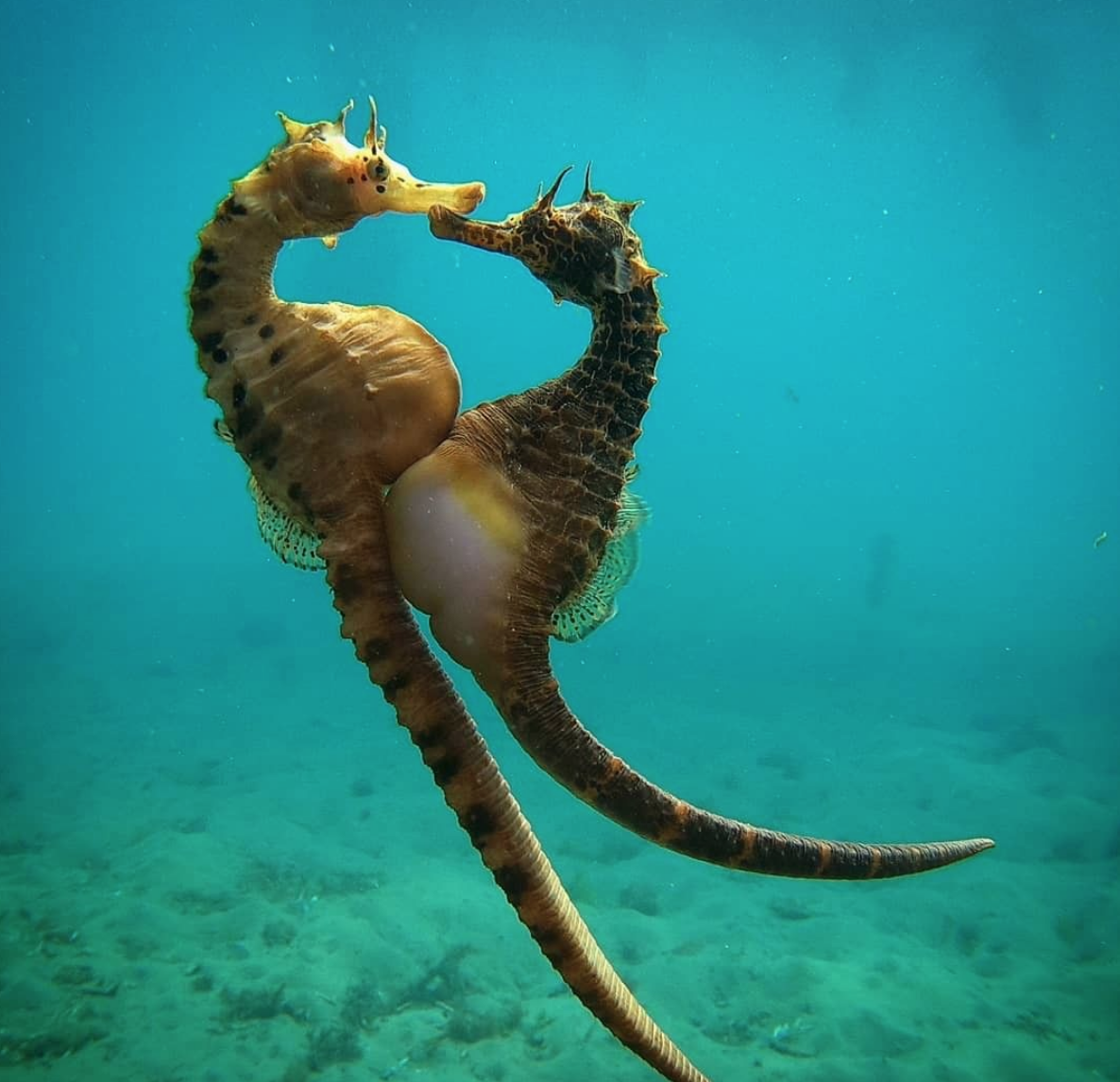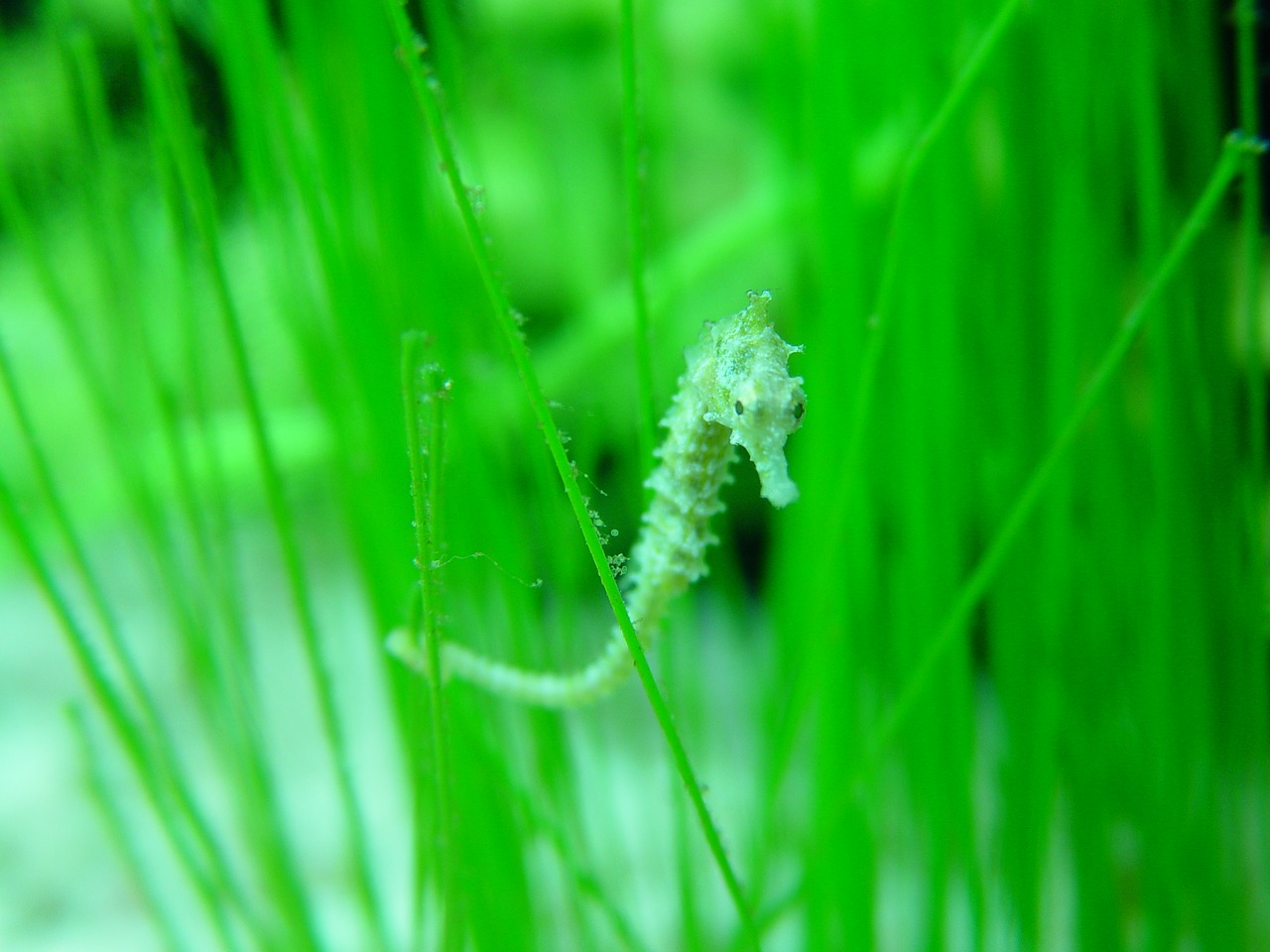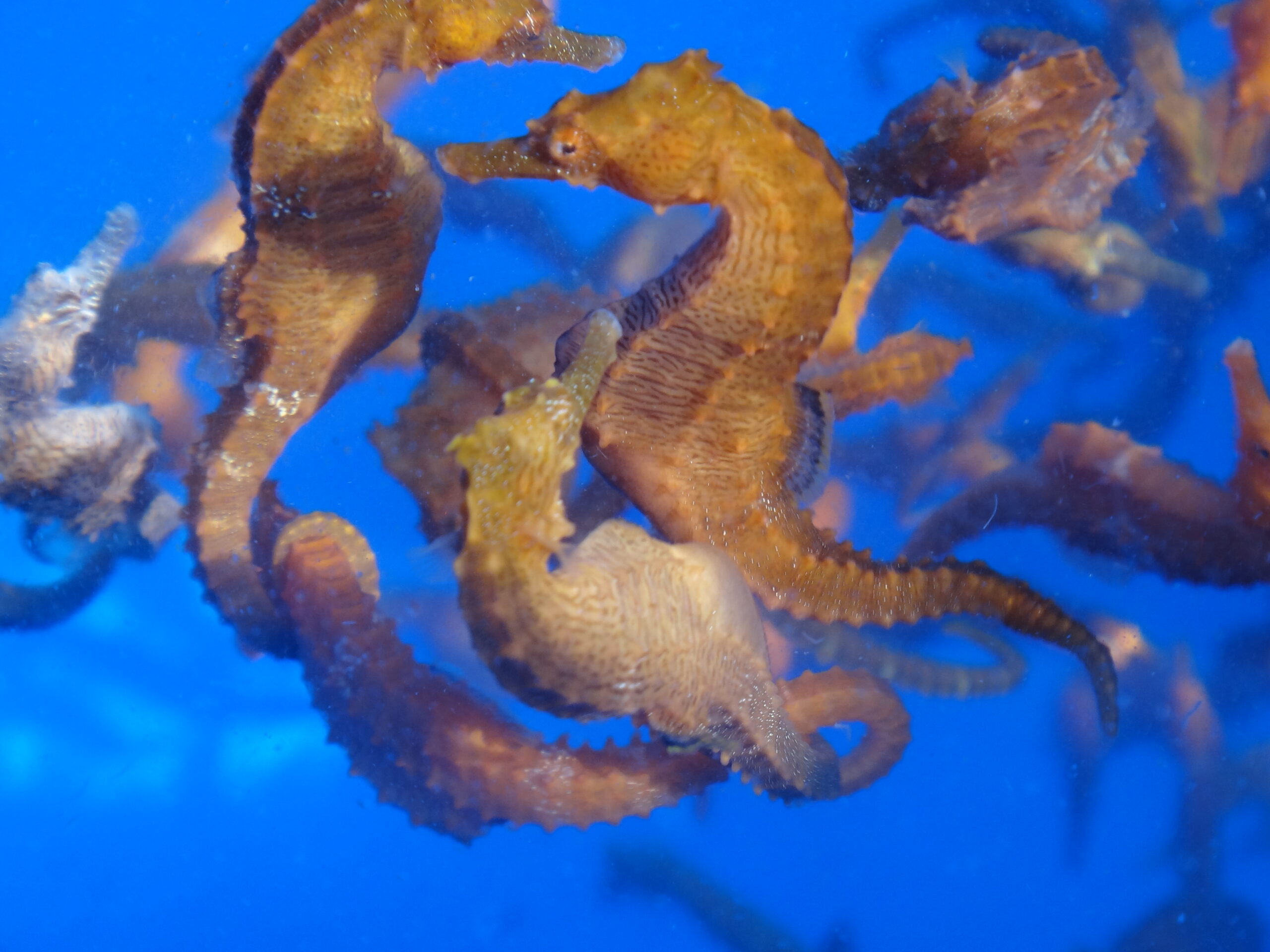7 Wild Facts You May Not Know About Seahorses
These extraordinary facts may change the way you look at seahorses forever

Found in both tropical and temperate waters all across the globe, seahorses are arguably one of the most distinctive and charismatic marine wildlife species in existence. Ranging in length from more than a foot to under one inch, there are more than 40 known species of these ‘horses of the sea’ recorded by scientists to date. From odd dieting tendencies to adorably romantic relationship rituals, there’s much more to seahorses’ majestic intrigue than their trademark elongated mouths and curly tails. Here are just a few wildly fun facts you may not have known about this charming species.
They may not look like it, but they’re technically fish

Due to their unique anatomical shape and lack of scales, many people may not consider seahorses ‘fish’ at first, but they are indeed! Possessing swim bladders to remain buoyant in the water and utilizing gills to breathe, these fish also thrive in a strong suit of sturdy armor-like plates. Their tough, bony makeup makes them pretty tough for other fish to digest, illustrating the reason for their lack of many natural predators. Other than crustaceans like crabs who can pluck them up with their sharp pincers, humans are likely one of the more significant threats to the species, historically harvesting the animals faster than they’re able to reproduce. Luckily, we’ve made some progress against such population depletion, but there’s still much work to be done to protect this species as we learn more about their still largely mysterious global distribution patterns.
Romance is real in the seahorse world

Seahorse couples are essentially serial monogamists, sticking with one partner for long periods of time. Remaining committed to a single partner enables seahorses to pass through multiple reproduction cycles during each mating season, heightening the likelihood of successful, continuous procreation over time.
Every morning, seahorse couples engage in ritualistic dances to greet each other, moving through intricate, rhythmic sequences of twists and twirls for minutes to hours on end. While we humans may schedule dates with romantic prospects to analyze our compatibility and get to know each other better, seahorses prove we’re not the only species that ‘date!’ They engage in their daily dances to strengthen their romantic bond, ensure their reproductive cycles are properly synced and to verify each day that their partner is both still fervently committed and, frankly, alive (hey, that’s kind of important).
Males take the lead when it comes to the labor of childbirth

Seahorse ladies need not fret when it comes to gestation and childbirth. Perhaps one of their most distinctive traits, the Syngnathidae family (which includes both seahorses and their cousins, pipefishes and seadragons) stands remarkably unique in that it’s the males that carry the burden of pregnancy, not the females. After their complex courting dance during a reproductive cycle, female seahorses will place their eggs into an oviduct in the male’s body, which is housed in what’s known as a brood pouch. Once the placement is complete, males settle into an area to rest throughout gestation, which can last up to a number of weeks.
When it’s finally time for the babies to be born, the father’s body experiences strong contractions that expel the young out of his pouch. As little as five to as many as 1,000 juvenile seahorses, often called ‘frys’ in the fish world, can be born to the world in a single birthing session. Estimates suggest that only about 0.5% of the offspring will survive to become reproducing adults, so the babies are independent immediately upon birth, pushing as hard as they can right away to become thriving, strong and growing seahorse lads and lasses.
Seahorses are infamously awful swimmers

Seahorses aren’t just different from other fish in their external appearance, either: they’re also ridiculously poor swimmers. They are the slowest-moving of all fish species because of an impeccably tiny fin in the middle of their backs being the only way to propel themselves. This one little fin can beat back and forth up to 50 times a second, but the size of the fin keeps it from making much progress when it comes down to distance traveled. Even with small pectoral fins that assist in steering, seahorses are sadly known to be so delicate that they can become fatally exhausted when waters get rough during storms.
However, while they aren’t all that durable, seahorses are quite unique in that they can not only move forward, but also up, down and backward. The shape of their heads also helps them move through the water almost silently; when you combine that with their ability to camouflage into their surroundings thanks to helpful chromatophores within their skin cells, it’s clear that seahorses make apt hunters, proven by a predatory kill rate of around 90%. Hey, if you’re going to have a hard time swimming, might as well be super stealthy and efficient to make up for it!
Seahorses are crazy dexterous

While they do struggle when it comes to speed, that doesn’t mean this species isn’t athletic! Their tails are quite flexible for a reason, enabling them to anchor themselves to coral or seaweed when they’re in need of a rest. At times, they’ve even been known to wrap their tails around their mates so they don’t lose each other (sound the cuteness alarm). Additionally, this aspect of their anatomy also makes them skilled hitchhikers. They may not be able to travel long distances quickly alone, but linking themselves onto floating vegetation (or, sadly, marine debris) can ameliorate that issue and take them to all new destinations.
Seahorses follow a strict diet, and the goal is to eat—constantly

Since they don’t have teeth or even a stomach at all like other marine species do, the structure of a seahorse digestive system is also markedly unique. This makeup results in a digestive process that functions with extraordinary rapidity, requiring the animals to feast constantly on a carnivorous diet of tiny fish and planktonic copepods. Don’t let their small size fool you: seahorses can consume up to 3,000 crustaceans like brine shrimp in a single day, sucking them up through their trumpet-like snouts from as much as three centimeters away. Now that’s a high metabolism if we ever did see one!
Seahorses need our help

While these points make seahorses all the more fascinating as a species, there’s one more fact about them that’s critical for us all to remember: they’re depending on us to make sure the ecosystems they call home are healthy and protected from pressing threats like ocean trash. As our global marine debris problem grows more and more urgent every day, heartbreaking visual representations of the problem much like that depicted in the photo above are becoming continuously common. Justin Hofman, the photographer of this impactful photo taken in Indonesia, was noted in USA Today to have said that he wishes the picture ‘didn’t exist.’
“I took the photo in Indonesia, but this is happening everywhere in the world…when the tide came in, the debris came in with it, and the seahorse hopped from the seaweed to a little piece of plastic and then a Q-tip,” he explained. In his viral Instagram post, he expanded on the photo’s impactful message: “This photo serves as an allegory for the current and future state of our oceans. What sort of future are we creating?” This point couldn’t be more salient in the core point that it illuminates about human impact on wildlife and nature today.
There is hope, however, and it comes in the form of our own actions and determined resolve to change the future of marine wildlife all over the globe. If we commit to embodying a force of good to combat marine debris, we can stem the tide of ocean trash and give animals like the seahorse a renewed chance at a future of clean, trash-free environments. But it all depends on us. We must take action, and start today. Here at Ocean Conservancy, we’re taking bold steps toward actionable, practical and science-driven solutions to stop ocean trash at its source. Join us in this important work and learn more about our Trash Free Seas® program, and we can all work together to fight for a brighter, healthier future that we all know our ocean’s wildlife truly deserve.
